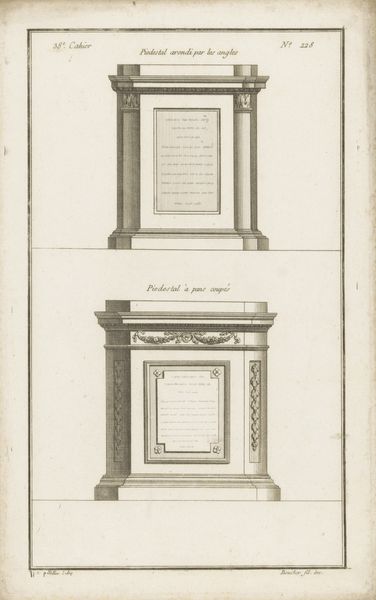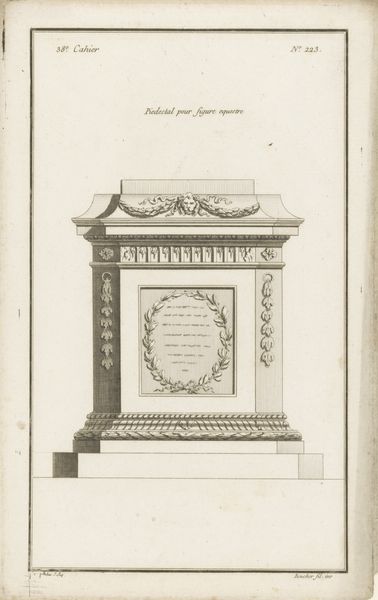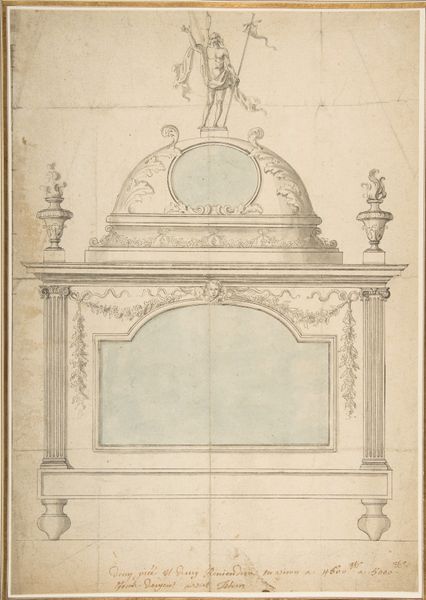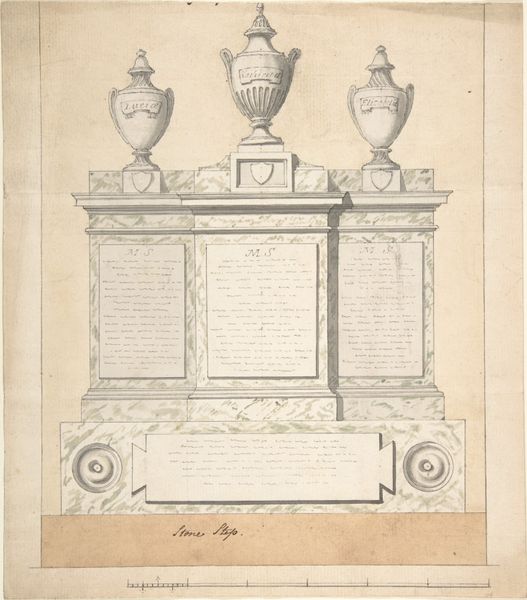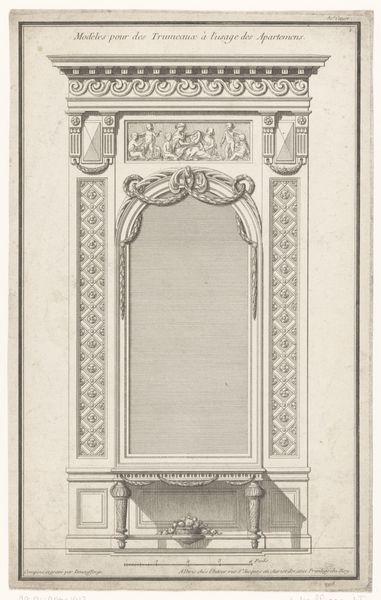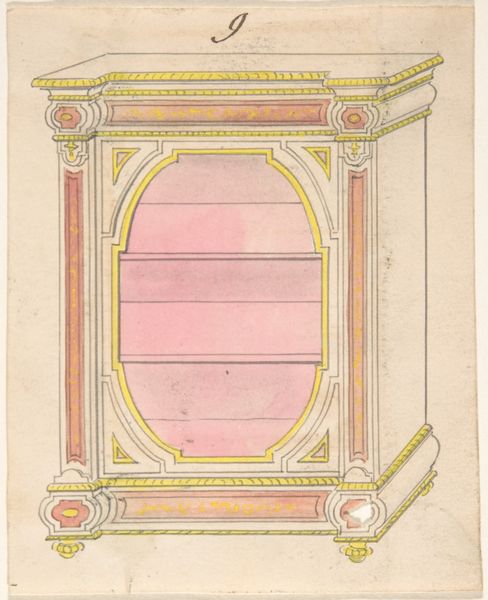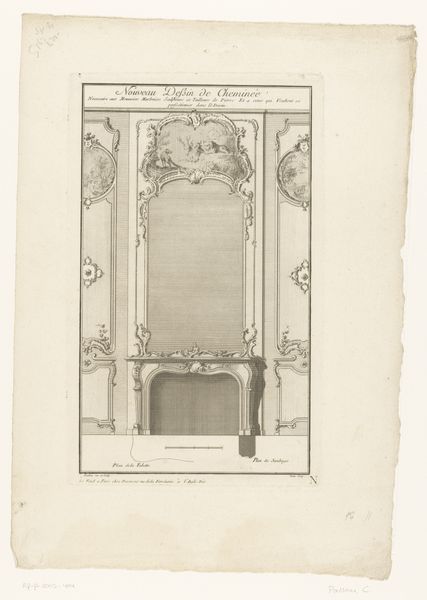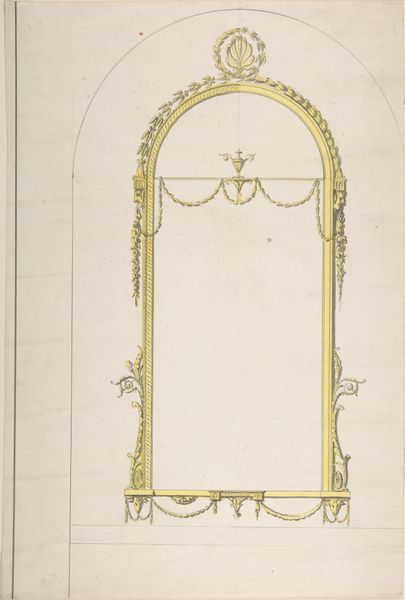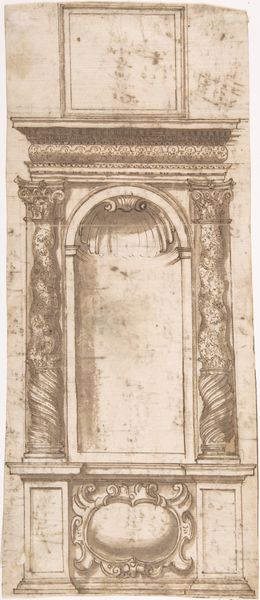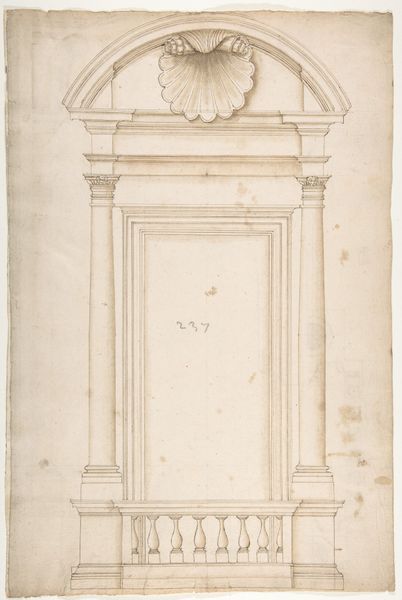
Design for an Octagonal Cabinet with Glass Doors and Shelves 1800 - 1900
0:00
0:00
drawing, print
#
drawing
# print
#
geometric
#
line
Dimensions: sheet: 5 1/2 x 3 3/8 in. (13.9 x 8.5 cm)
Copyright: Public Domain
Editor: Here we have an architectural design for an octagonal cabinet with glass doors, likely from the 19th century, held at The Met. The symmetry and ornate detailing feel quite formal to me, almost like a miniature temple. What cultural associations do you see at play here? Curator: The octagon itself carries weighty symbolic meanings across cultures. Consider its resemblance to an eight-pointed star, representing renewal, regeneration, and spiritual wholeness, often mediating between the square of the earthly realm and the circle of the divine. Look closely at the cusped arches on each opening. Editor: You mean those arched openings above each shelf? They seem a bit like Gothic arches, but more rounded. Curator: Exactly! That’s an arch form that calls to mind specific cultural memories for viewers of its time: a possible dialogue between Eastern and Western aesthetics. Now, what do *you* think this cabinet would contain, if built? What sorts of items would it display? Editor: Maybe prized porcelain or rare books? The things that someone treasures, reflecting their wealth and social standing? Curator: Precisely. These cabinets were more than just furniture; they served as microcosms of their owners' worldviews and social aspirations. The design reflects careful attention to cultural status and symbolic communication. Editor: I see it now. It’s like the cabinet isn't just storing objects, it’s also storing, or displaying, ideas and values. Thanks! Curator: A pleasure. Looking at design through the lens of cultural memory transforms an object into a powerful archive of our shared past.
Comments
No comments
Be the first to comment and join the conversation on the ultimate creative platform.
